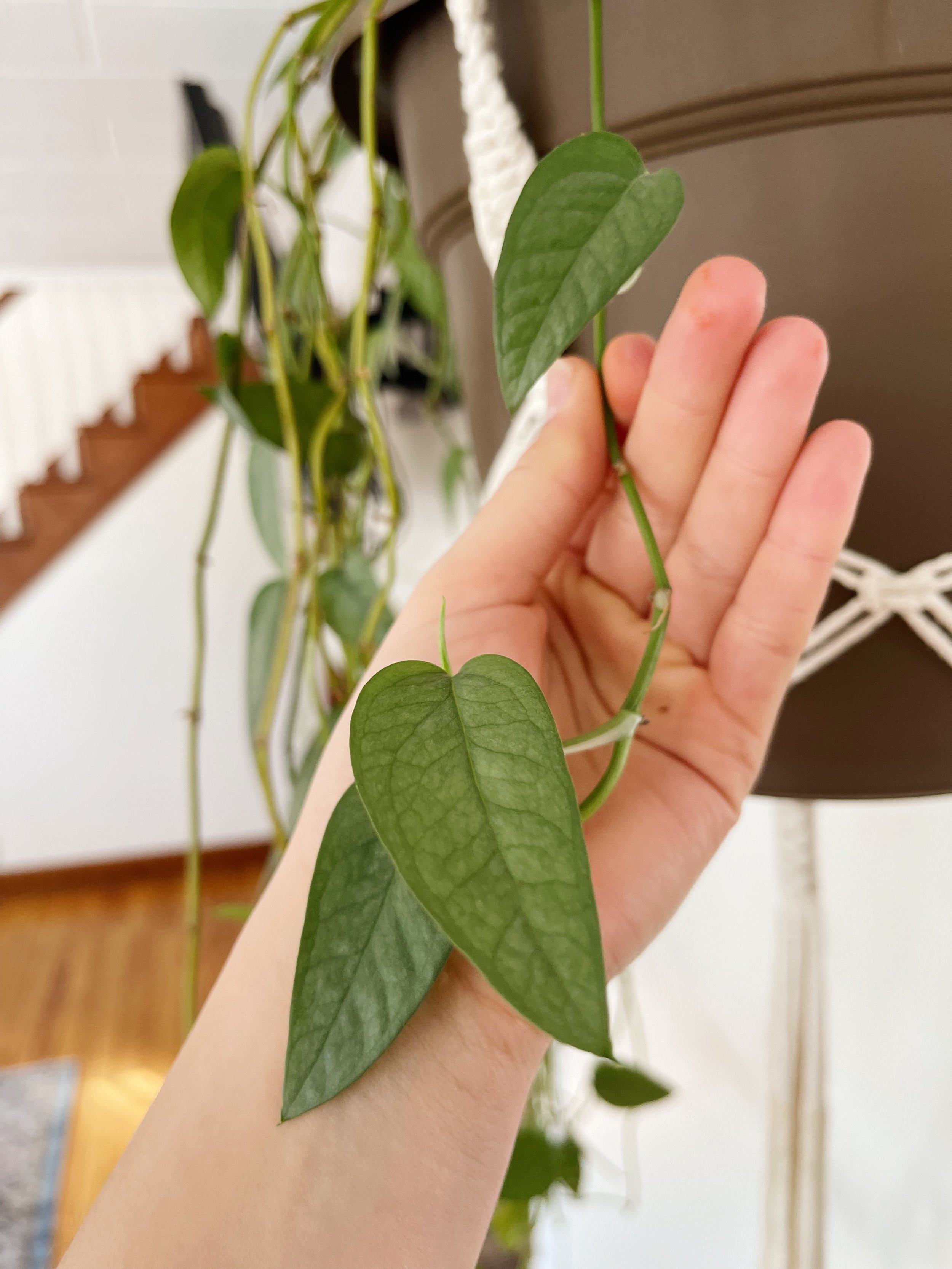Plant Propagation: Clone In Your Home
Cloning is something most of us see in sci-fi movies, but what if I told you that you could clone organisms right in your home? Propagating is the simplest level of cloning and a great way to quickly fill your house with beautiful plants. The local masters of the green thumb, Bookcliff Gardens, offer us some insight on a few top tips. Keep reading for a how-to on propagating your favorite house plants!
Swedish Ivy (Plectranthus Verticillatus)pinched below a growth node.
Before we dive into water propagation, let’s talk about the best plant choices for sprouting your propagation journey. Mona Dyer from Bookcliff Gardens points us towards vining plants with green stems like pothos, philodendron and Swedish Ivy. These plants are not only easy to propagate but also easy to keep alive (speaking from experience).
Swedish Ivy (Plectranthus Verticillatus) cutbelow a growth node.
Start off with clean hands, clean vessels (such as an old sauce bottle or mason jar) and clean cutting tools (simple kitchen scissors are perfect). Plants can transmit illnesses quickly, and chemicals can have unfortunate effects on their health as well, so starting off with a clean slate is important.
Once you pick the plant you choose to propagate, make your cut about 3 to 5 inches down the vine of the plant just above a growth node. Cutting the plant at a 45-degree angle will create more surface area for the plant to take in water. In the photos where my fingers pinch the vine would be the perfect place to make the cut. You can seethe nodes between the leaves and the pinched part of the vine. Nodes are where new growth is likely to happen.
Once the cut has been made, the above photo demonstrates what your cutting will look like. Make sure to remove any leaves on the lower stem, so that they don’t rot and precious energy goes to the thriving parts of the plant instead. You can see this is a very healthy section of the plant, shiny leaves (if a characteristic of your plant), distinct veins and a young leaf about to unfold. It is important to choose healthy plants to propagate to give them a better chance at survival in a new environment.
Cebu Blue Pothos (Epipremnum Pinnatum)pinched below two growth nodes.
Now that you have made your cut, Dyer recommends putting your cuttings into a jar of lukewarm water that covers the naked stems and waiting. Keep the water level, and refill with room temperature water. Keep your propagation in a sunny place that is not too cold and not too hot. Your cutting is in a very vulnerable state and needs the best growing conditions.
Epipremnum Pinnatum (Cebu Blue Pothos).
Dyer reminds us this is a lesson of patience. Once the young roots are about an inch long, transplant each plant into a small pot with optimal drainage. Place soil around the plant rather than poking the roots into the soil in their delicate state. Tend to your plants regularly, and remember — not too wet, not too dry!
If you like the look of the plants growing in water, you can often leave them to grow longer if the conditions are right for the species, but it is important to note that the longer the plant is in the water, the harder the successful transfer to soil will be. As mentioned before, the pothos species is very tolerant of this and a great option for propagating.
Propagation is a great option for low-cost gifts, multiplying expensive or rare plants and is a great lesson in the amazing abilities of the natural world. Taking cuttings from plants or pruning them will also cause your plant to be fuller and healthier rather than leggier or taller, as pruning stimulates growth from the root.




